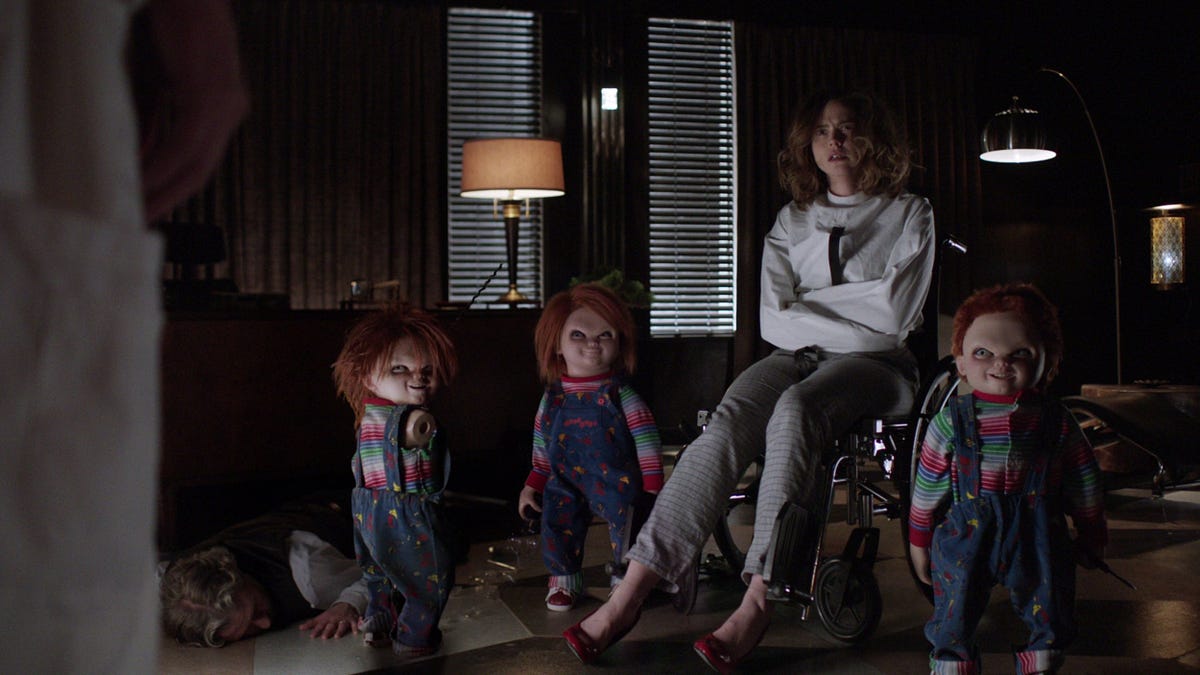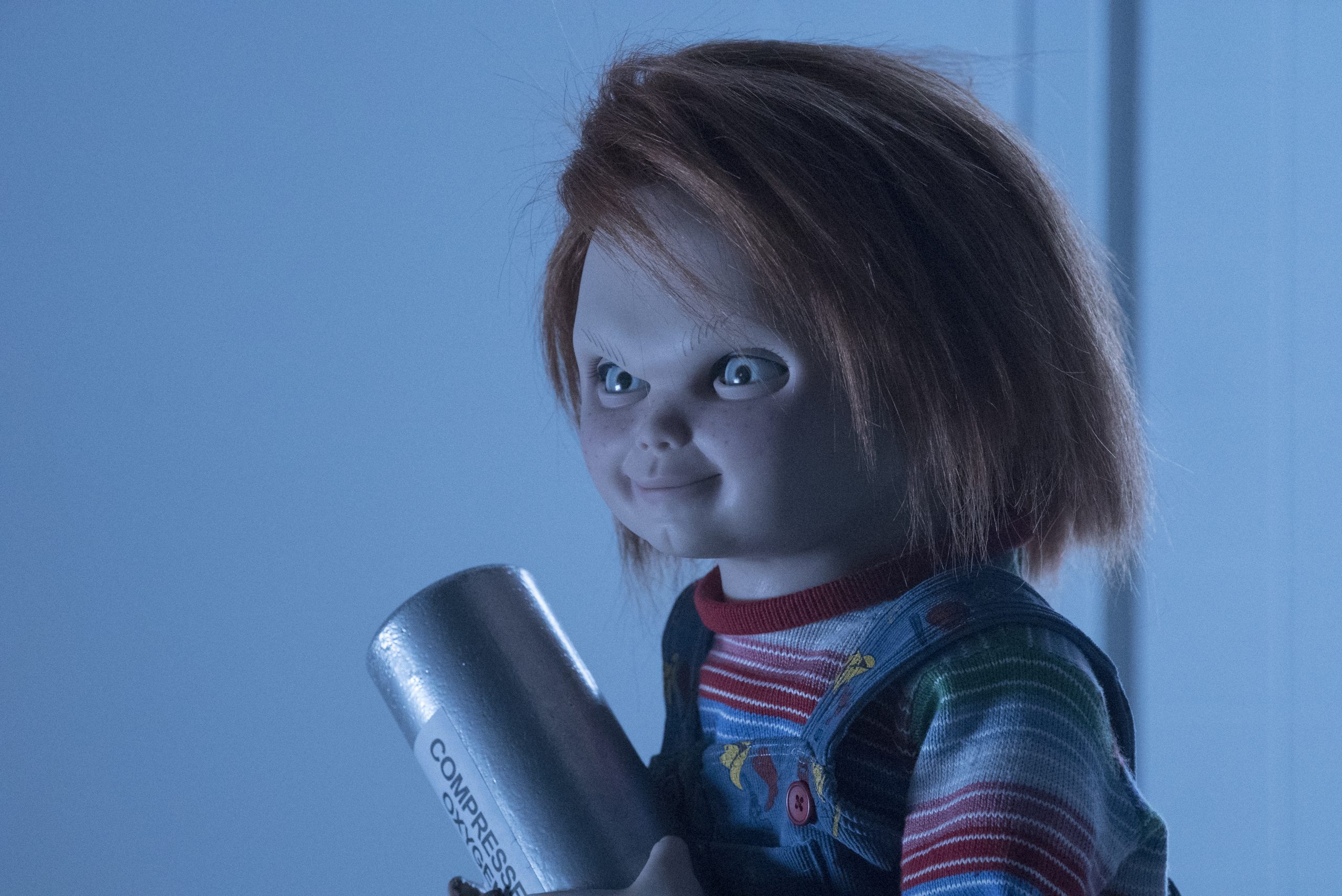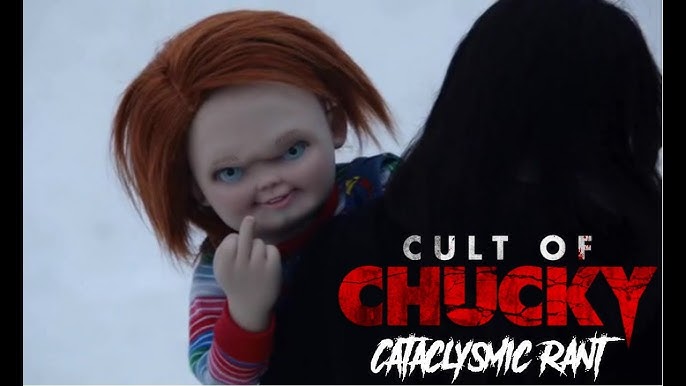Cult of Chucky

Cult of Chucky (2017) is the seventh installment in the Child’s Play horror franchise, continuing the twisted story of the killer doll, Chucky. The film follows Nica Pierce (played by Fiona Dourif), who has been institutionalized after being wrongfully blamed for Chucky’s murders in the previous film, Curse of Chucky. Now in a psychiatric hospital, Nica begins to suspect that Chucky is somehow back when a series of grisly murders start occurring among the patients.
![]()
Meanwhile, Andy Barclay (Alex Vincent), Chucky’s original target from the first films, learns of Nica’s situation and attempts to intervene. However, this time, Chucky has a sinister new plan, involving multiple dolls possessed by his spirit, creating a “cult” of Chucky dolls that wreak havoc. The film explores themes of trauma, revenge, and fear, while delivering intense horror scenes and dark humor, true to the franchise’s style.

This sense of horror movie fandom oozing in at every edge of the film is reflected in the plot itself, which presents an utterly generic scenario, and then gently twists it back and forth. Nica ended up in a mental institution, having to all appearances murdered her family four years ago, and under the ministrations of the horrible Dr. Foley (Michael Therriault) – some of the film’s very best one-liners come from Chucky’s queasy amazement at finding someone even more sociopathic than he is, in the form of the bad doctor – she has finally mostly convinced herself that she did snap and kill everyone, and that the murderous little doll she thought really did it was just a concoction of her broken brain.

The vast majority of the action plays out in the halls of the hospital, with Chucky come back to torment her by killing all of her acquaintances among the other patients (it would be a major overreach to call them “friends”), not for any particular reason but his delight in cruelty. This is the stuff of plenty of movies, of course; the twist is that the central question has been changed from the boilerplate of “is she really committing these murders herself?”, because we know goddamn good and well that she’s sane as sane can be. This is just so much more satisfying, not simply because it sidesteps cliché, but because it keeps us focused in the right place: on Chucky, who is a delightful little horrible character, and on Brad Dourif’s splendid, ever-reliable performance as the sarcastic little monster.

In the ever-escalating mythology that governs this series, Cult introduces a new wrinkle: Chucky can keep splitting off his personality into multiple dolls, which means we get several different Chuckys all running rampant, and Dourif gives each of them a slightly different bent. The payoff, of course, is when we have multiple Chuckys in one scene, with Dourif playing comic one-liners off of himself, in a scene as funny as anything in any of these films yet. And that brings me to another neat trick of Cult of Chucky: it’s both a comedy and a thriller, but it’s never exactly a comic-thriller. Rather, the film manages to split itself into twin plots of Nica and Chucky, leaving all the tension in the former and all the corny dark comedy in the latter – and there remains yet a third plotline, which finds Chucky’s first owner, Andy Barclay (Alex Vincent) racing to stop him.

This mixture of tones and stories results in a fairly good chaotic pile-up of stuff near the end, setting up a sequel, but also functioning more basically to remind us that Chucky works better as a vehicle for sowing disorder than as a horror movie killer. And quite a lot of disorder it is, too, much of it funny, much of it gory, certainly none of it scary, but after Curse of Chucky, I don’t suppose that Mancini still needs to prove that he can make this most ludicrous of characters scary, if he wants to. Cult of Chucky is much more about amping up the inherent absurdity of the premise without actually playing the material for kitsch, a balancing act that shouldn’t work – and didn’t work in the first three films in the franchise – but lands damn nearly perfectly here.










